Topic 10- Endocrine System I
Outcomes:
compare and contrast homeostatic processes
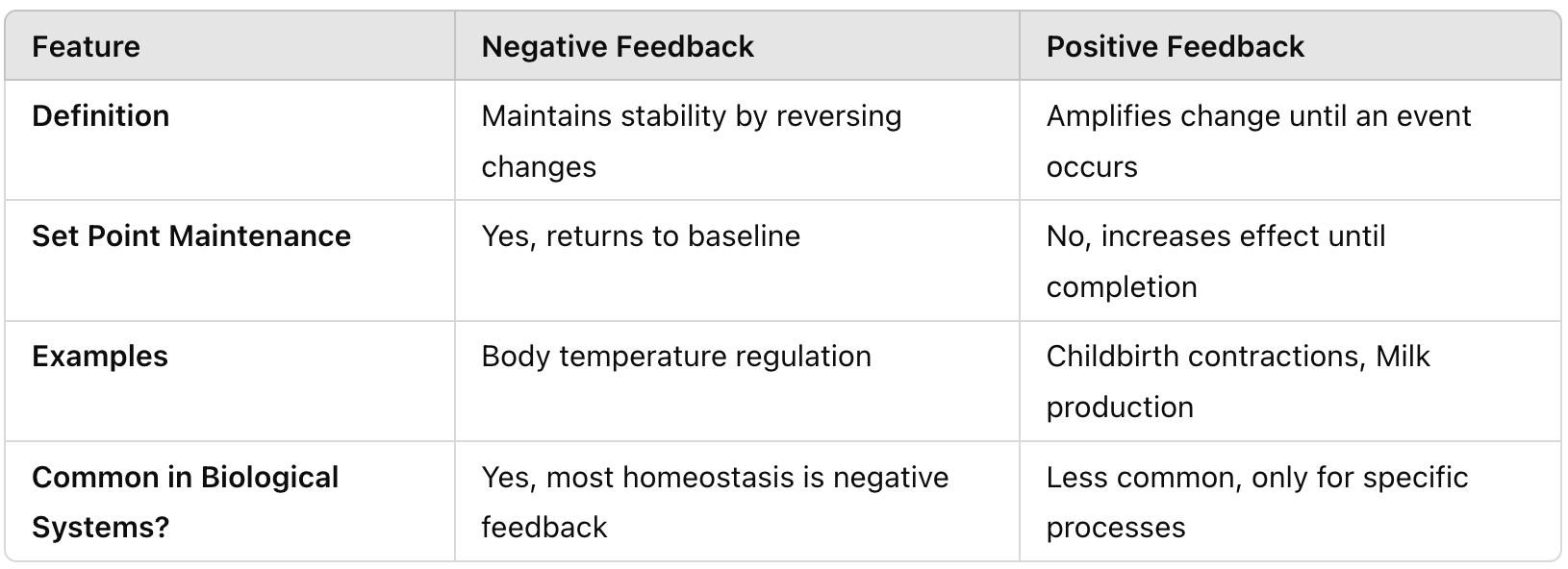
sequence homeostatic processes
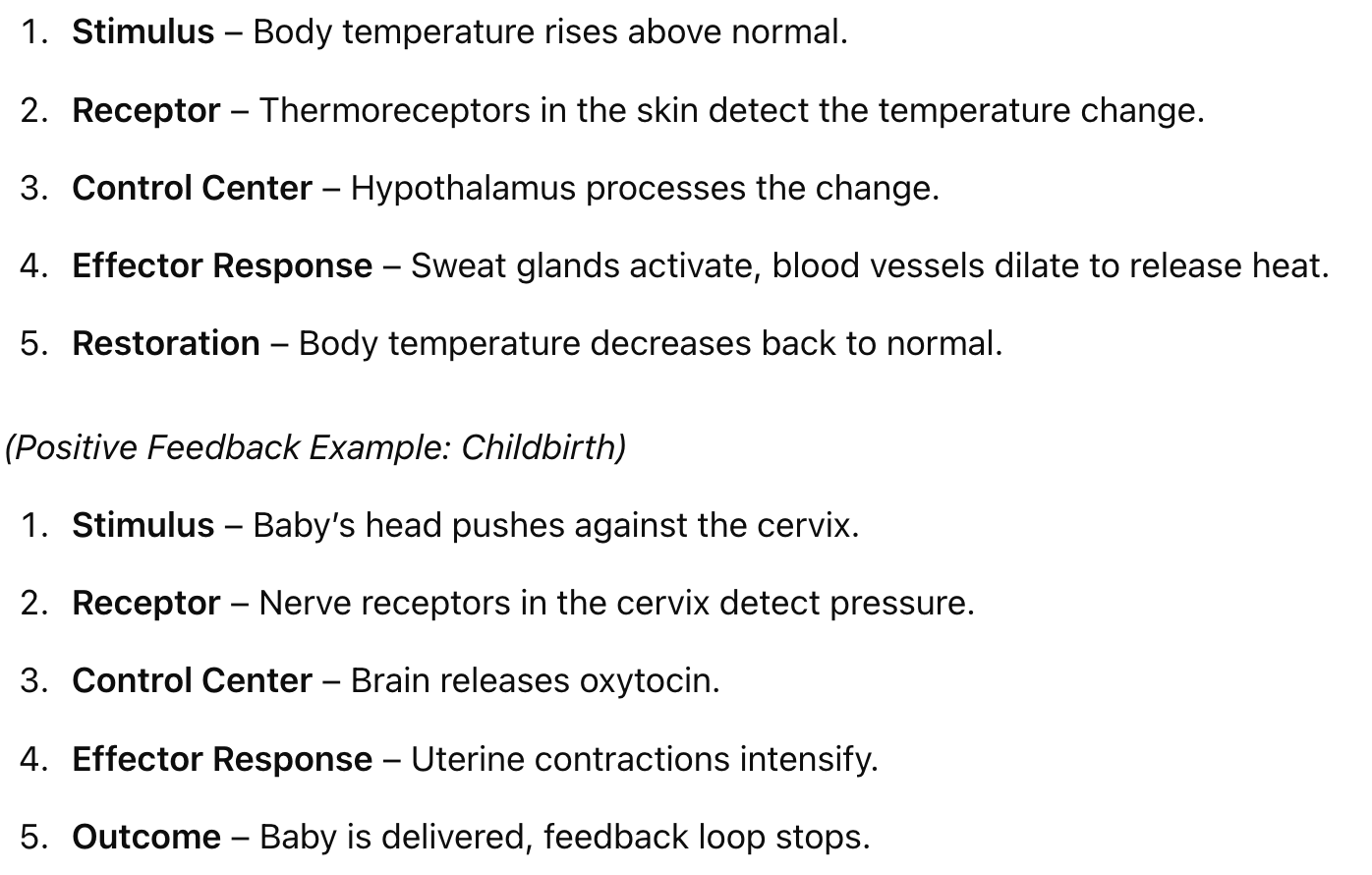
compare and contrast types of intercellular communication
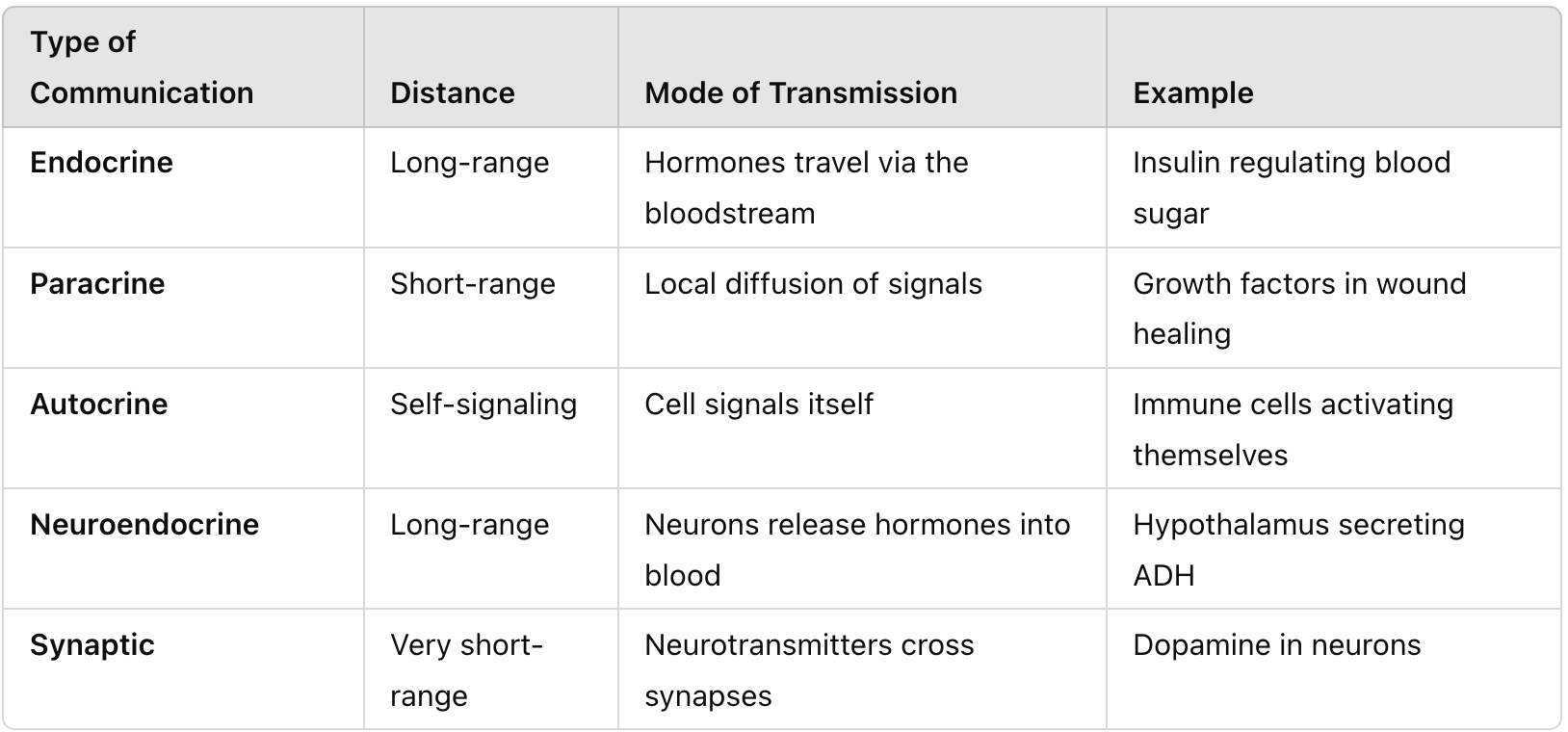
compare and contrast types of signaling molecules

sequence water- and lipid-soluble hormone pathways
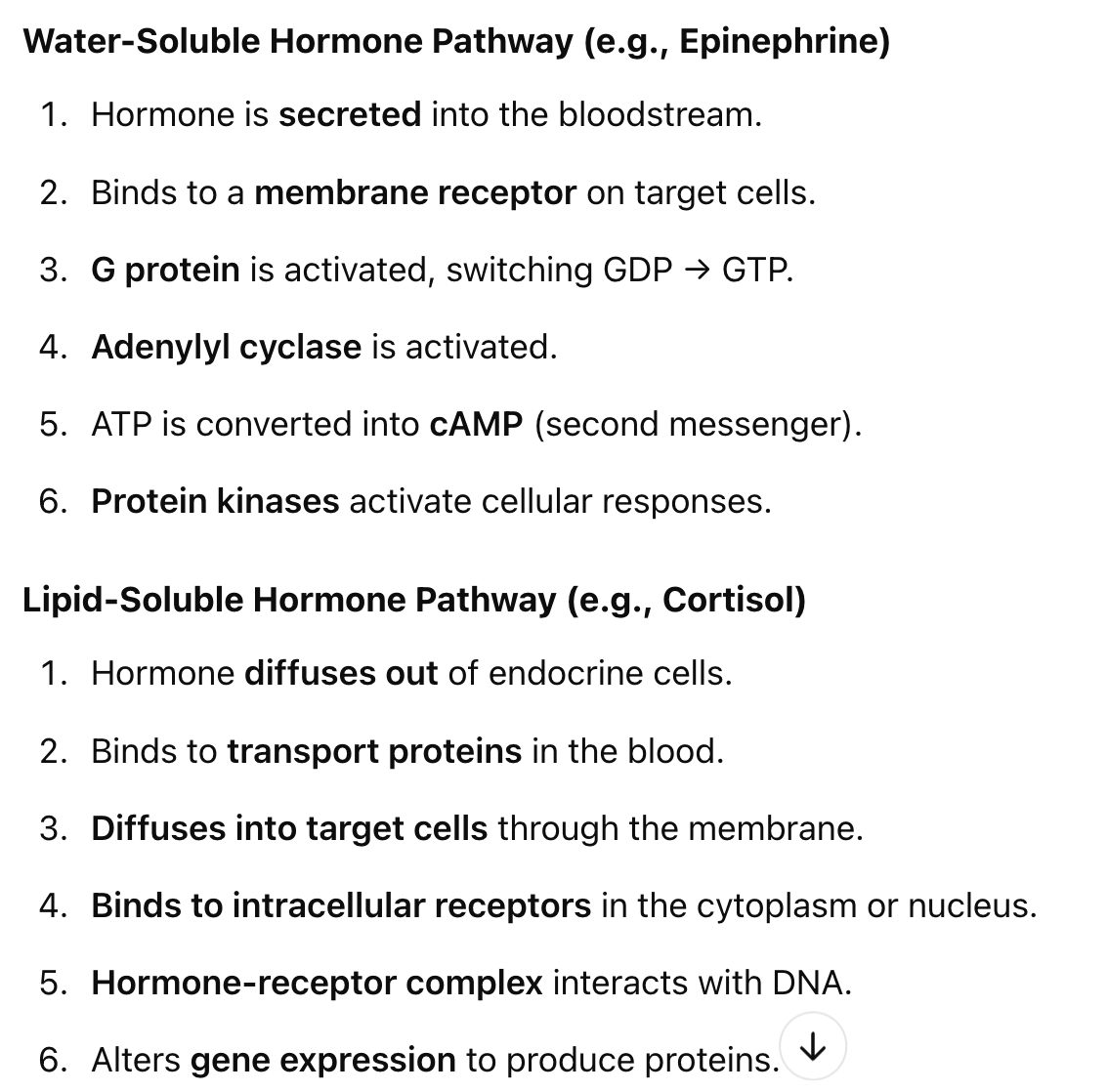
compare and contrast water- and lipid-soluble hormone pathways

sequence action of epinephrine
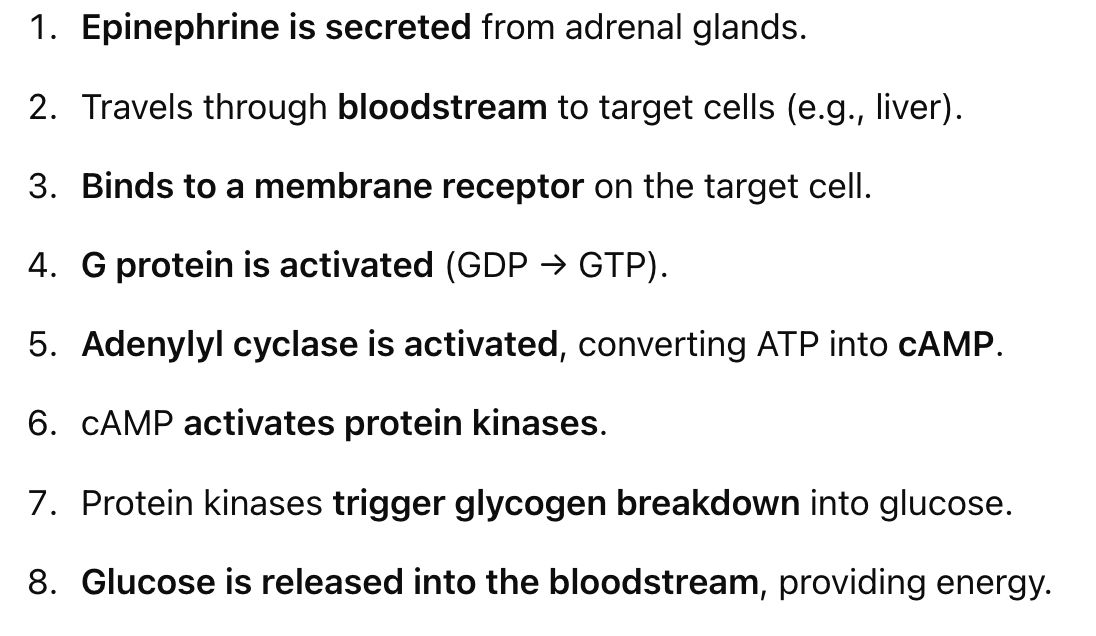
compare and contrast endocrine and exocrine systems

I. Introduction to Physiology
A. Homeostasis
Definition: The ability to maintain a stable internal environment despite external changes.
Regulation: Uses feedback mechanisms to control internal conditions.
Types of Feedback:
Negative Feedback (Maintains stability)
Keeps conditions at a set point (e.g., body temperature regulation).
Most biological processes use negative feedback.
Positive Feedback (Amplifies change)
Enhances a process until a specific event occurs.
Examples:
Labor → Childbirth
Suckling → Milk production
B. Exchange with the Environment
Living systems exchange materials with the environment.
What needs to be exchanged?
Gases (Oxygen, Carbon Dioxide)
Nutrients (Food, Water)
Waste (Excretion)
Limiting Factors:
Exchange must occur across cell membranes (e.g., digestive system absorbs nutrients and removes waste).
Branching and folding of biological structures increase surface area for efficient transfer (e.g., lungs, intestines).
II. Intercellular Communication
A. Introduction to Hormones
Hormone (Greek: “to excite”) – Chemical messengers that regulate body processes.
Secreted into bodily fluids (like blood).
Target cells: Cells that have specific receptors for the hormone.
Receptor Regulation:
Too much hormone signal → Downregulation (fewer receptors).
Too little hormone signal → Upregulation (more receptors).
B. Types of Intercellular Communication
Endocrine Signaling
Hormones travel through the bloodstream to distant target cells.
Paracrine Signaling
Hormones act locally on nearby cells via diffusion.
Autocrine Signaling
A cell releases signals and responds to itself.
Neuroendocrine Signaling
Neurons release neurohormones into the blood to act on distant organs.
Synaptic Signaling
Neurons communicate via neurotransmitters across synapses.
III. Hormones
A. Three Major Classes of Hormones
Polypeptides
Example: Insulin
Polar (cannot pass through cell membranes).
Steroids
Example: Cortisol
Non-polar (derived from cholesterol, long-term stress response).
Amines
Example: Epinephrine
Small and fast (derived from amino acids).
Solubility of Hormones:
Water-Soluble (Polypeptides & most Amines)
Bind to external membrane receptors.
Lipid-Soluble (Steroids)
Diffuse into cells and bind with internal receptors.
B. Water-Soluble Hormones (Signal Transduction Pathway)
Hormone is secreted and travels in the bloodstream.
Binds to receptor on the target cell membrane.
Triggers intracellular signaling cascade (without entering the cell).
G Protein Activation:
Hormone binds to membrane receptor linked to a G protein.
Inactive GDP → Active GTP.
Adenylyl Cyclase Activation:
G protein binds to adenylyl cyclase, activating it.
Converts ATP → cAMP (a second messenger).
cAMP activates Protein Kinases:
Kinases phosphorylate proteins (activate or inhibit them).
Leads to cellular response.
C. Lipid-Soluble Hormones
Hydrophobic (can pass through the cell membrane).
Travel in blood attached to transport proteins (prevent clumping).
Steps:
Diffuse out of endocrine cells.
Bind to transport proteins in blood.
Diffuse into target cell.
Inside the cell:
Bind to receptors in cytoplasm.
Enter nucleus → form a hormone-receptor complex.
Alter gene expression (changes protein function).
D. Multiple Effects of Hormones
A single hormone can have different effects based on:
Different receptors on different cells.
Different target cell responses.
IV. Endocrine vs. Exocrine Systems
A. Endocrine Glands
Ductless glands that release hormones directly into the bloodstream.
Deliver hormones to distant target organs.
Examples:
Pituitary gland
Adrenal gland
Thyroid gland
B. Exocrine Glands
Have ducts that transport secretions to specific locations (localized effects).
Examples:
Sweat glands (skin)
Mammary glands (milk production)
Salivary glands (digestive enzymes)
Digestive system glands